Swiss-led research helps uncover new truths about air pollution
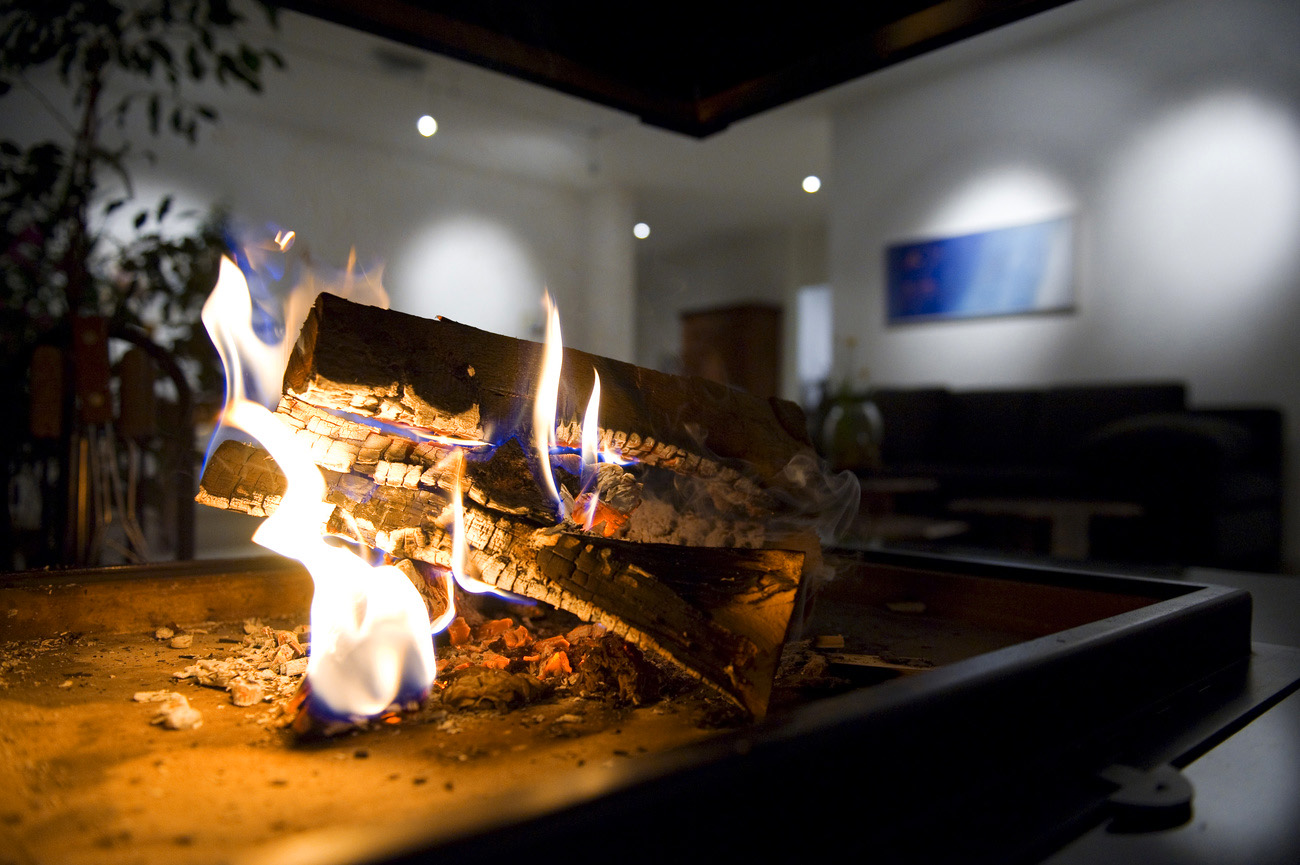
Scientists are only beginning to understand how tiny particles in the air, known as aerosols, affect the climate and our health. They are one step further thanks to long-term monitoring stations in Switzerland and 13 other European countries that reveal the scope of the pollution.
On a scorching July afternoon, a white caravan is parked next to Labyrinthplatz, a maze-like garden located in the heart of Zurich. Though inconspicuous from the outside, the caravan houses highly sensitive equipment to monitor small particles in the air.
Labyrinthplatz is within walking distance of Zurich’s main train station and several bus stops, and is surrounded by dozens of restaurants, bars, shops and apartment buildings. Particles coming from fry cookers, barbecues, cigarettes, car emissions, and pollen remain suspended in the air for a long time.
“This is exactly the kind of research site that we aerosol explorers dream of,” says Gang Chen, a doctoral candidate at the Paul Scherrer Institute (PSI) just outside Zurich.
By evaluating aerosol components collected at 22 monitoring stations like this one, PSI and 70 international collaborators have been able to identify key human and natural sources of pollution. Their results were published in the journal Environment InternationalExternal link in August.
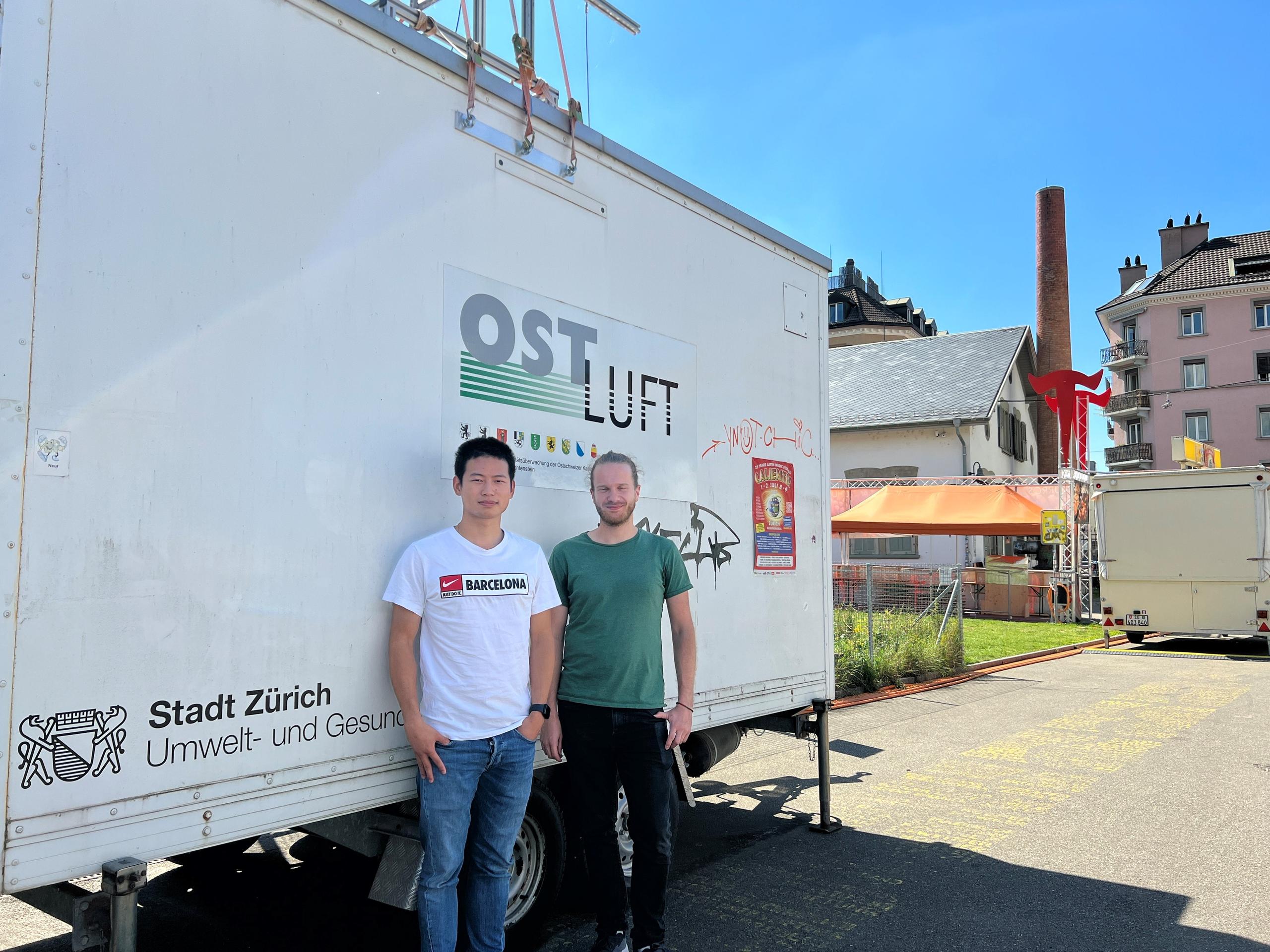
Public health concern
Since the Covid-19 pandemic, the term “aerosol” – a particle measuring between 0.01 and 10 microns in diameter – has become familiar to the public. This particulate matter can cause many chronic and acute respiratory and cardiovascular diseases, including asthma, bronchitis and lung cancer.
Scientists and medical professionals used to think that such health problems could be avoided by simply reducing the concentration of organic aerosols in the air we breathe. But in 2020, researchers from the PSI reported in the journal NatureExternal link that the effects of aerosols depend less on how many of them there are and more on the individual source of the pollution, its toxicity and how it enters the human body.
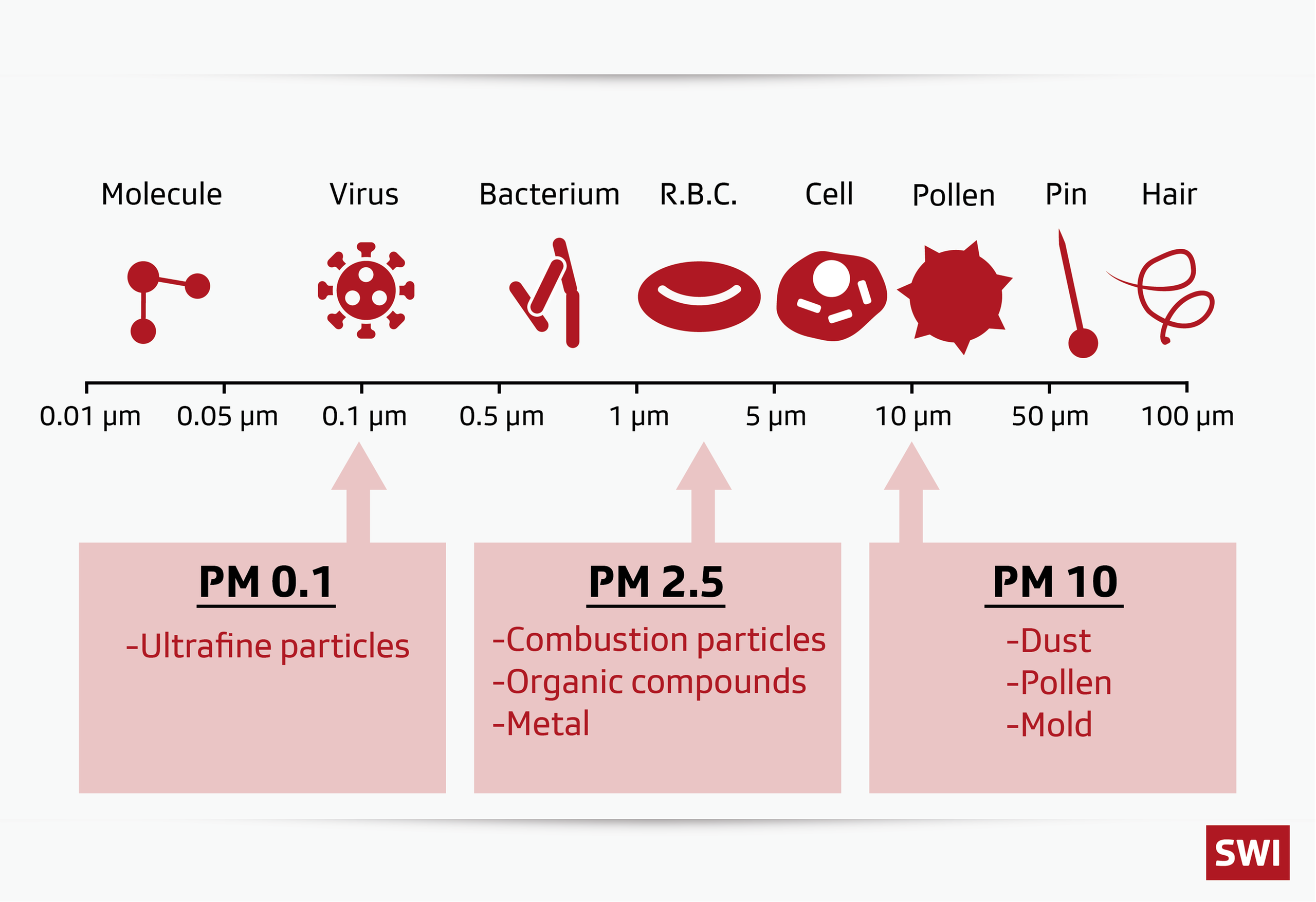
Ranking European cities
“I am afraid that no researcher dares to say that they clearly understand the sources of organic aerosols,” says Chen. Even with 22 monitoring stations deployed across Europe, tracing where organic aerosols come from is no easy feat because their concentration and compositions change constantly, according to Chen.
“We can imagine it as a piece of music,” he adds “What we want to do is to create a model with which to break down this piece of music, so that we know which instruments were used to play the music in each second and how many decibels each instrument emits.” (In this model, the instruments represent the sources of organic aerosol pollution, and the decibels are the chemical composition of aerosols and their respective concentrations).
To gain more insight into this, PSI sent requests for data to 46 existing observatories in Europe and received responses from nine non-urban and 13 urban monitoring stations. They analysed the local aerosol pollutant data collected at these stations between 2013 and 2019 to find out which aerosols were present in the air and how they varied across days, months, and seasons.
Unsurprisingly, the results show higher concentrations in urban areas. Kraków, the second-largest city in Poland, is the most polluted (40.4 µg/m3), while rural Birkenes in southern Norway is the cleanest (1.3 µg/m3).
Pollutants from heating sources
But the researchers also found that while the composition of organic aerosols varied across sites, the most significant source of pollution is strikingly similar: residential heating with solid combustibles. According to Chen, areas that still rely on wooden logs, wood pellets, coal or peat for residential heating – such as in Romania – are generally among the most aerosol-contaminated. In contrast to power plants, which have strict regulations and filter systems, residential heating emissions across Europe are less well regulated.
Although Switzerland doesn’t specify a maximum amount of solid combustibles used for residential heating per household, it has become increasingly aware of the issue and taken measures from the sources including to control the fuels quality, operation of heating equipment, height of chimneys, etc.
The Swiss Federal Office of the Environment (FOEN), told SWI swissinfo.ch that since new regulationsExternal link for small wood combustion installations were adopted in 2018, wood-fired local space heaters must meet European ecodesign emissions standards when placed on the market. They may also only be operated with the appropriate combustible and must be regularly inspected. Coal is no more used in such combustion installations in Switzerland and peat is not permitted at all.
“Technology continues to develop, and it seems likely that [a new amendment] of the regulations may be considered in the next few years,” the FOEN adds.
Traditional sources of emissions
The second major source of aerosol pollution is traffic. Although motor vehicle emissions in Europe have been under careful and strict regulation since the 1990s, no country has yet set limits on pollution from non-tailpipe emissions, such as tire wear, brake wear, road wear and road dust.
Stuart Grange, a postdoctoral researcher at the Swiss Federal Laboratories for Materials Science and Technology (Empa) who collects non-exhaust emission samples, says that countries have a hard time controlling such emissions because technological solutions to trap or control them are not yet available on the market. But he notes that air pollution research is increasingly shifting focus away from traditional sources of emissions towards those that are more diffuse and difficult to manage.
PSI and its collaborators are part of that research trend, having also developed a standardised protocol identifying aerosol sources. Aerosol measurement expert Lukas Durdina of the Zurich University of Applied Sciences, who was not involved in the PSI study, says this will prove useful for other researchers because “depending on the calibration and measurement protocol, the same instrument can give you a very different answer and relative comparison is very uncertain.”
At the end of 2021, the World Health Organization (WHO) revised its air-quality guidelines on aerosol pollutionExternal link, stating that the total amount of aerosols which are smaller than 2.5 micrometres in diameter should not exceed five microgrammes per cubic metre of air, while the previous guidelines set the upper limit at ten microgrammes per cubic metre.
While researchers agree that the WHO’s limit encourages the reduction of aerosol pollution, they believe the organisation should focus more on the sources of the particles and their chemical composition. Chen points out that “if five microgrammes of aerosols come primarily from sea salt, there would be no negative impact on humans at all.”
“I really hope that one day, the protocol we developed can be used by the WHO to further clarify which sources of particle pollution are harmful to health,” says Chen.
Edited by Sabrina Weiss

In compliance with the JTI standards
More: SWI swissinfo.ch certified by the Journalism Trust Initiative

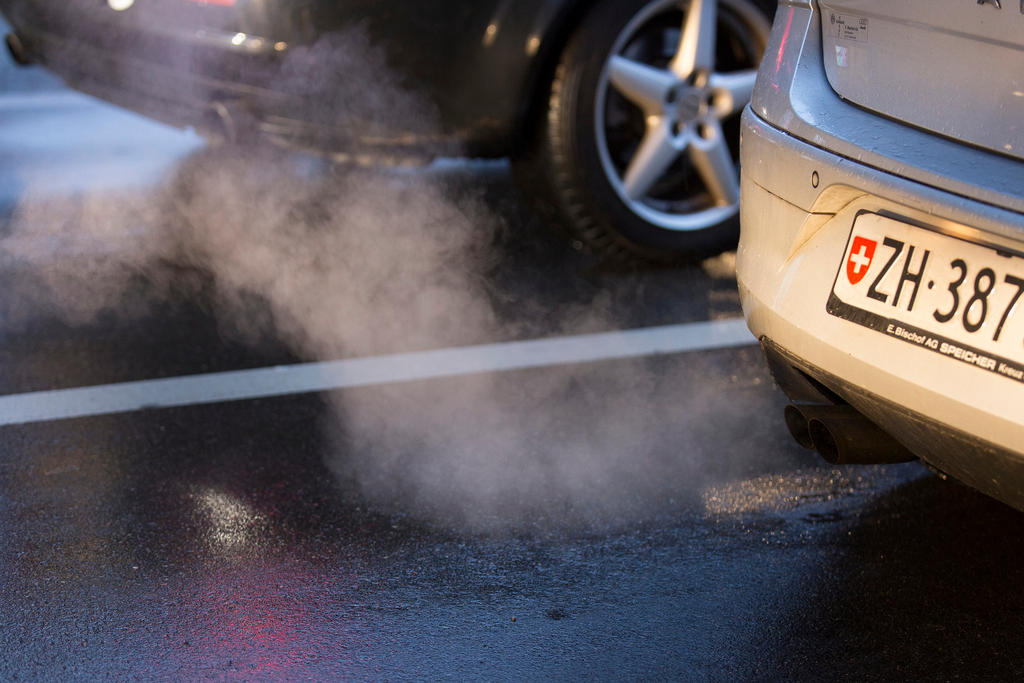
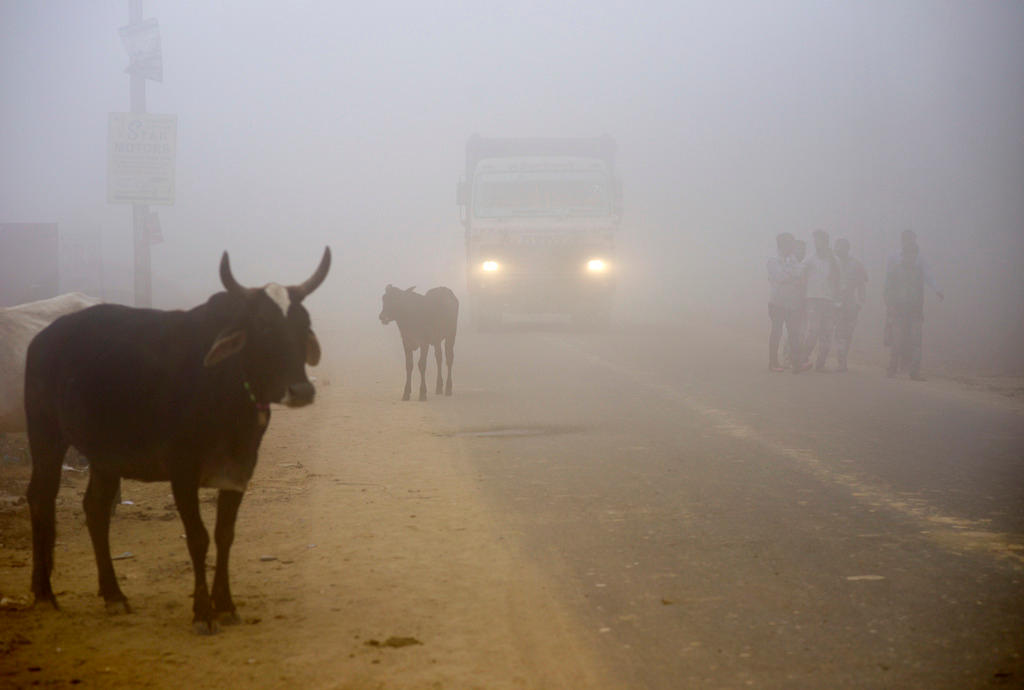
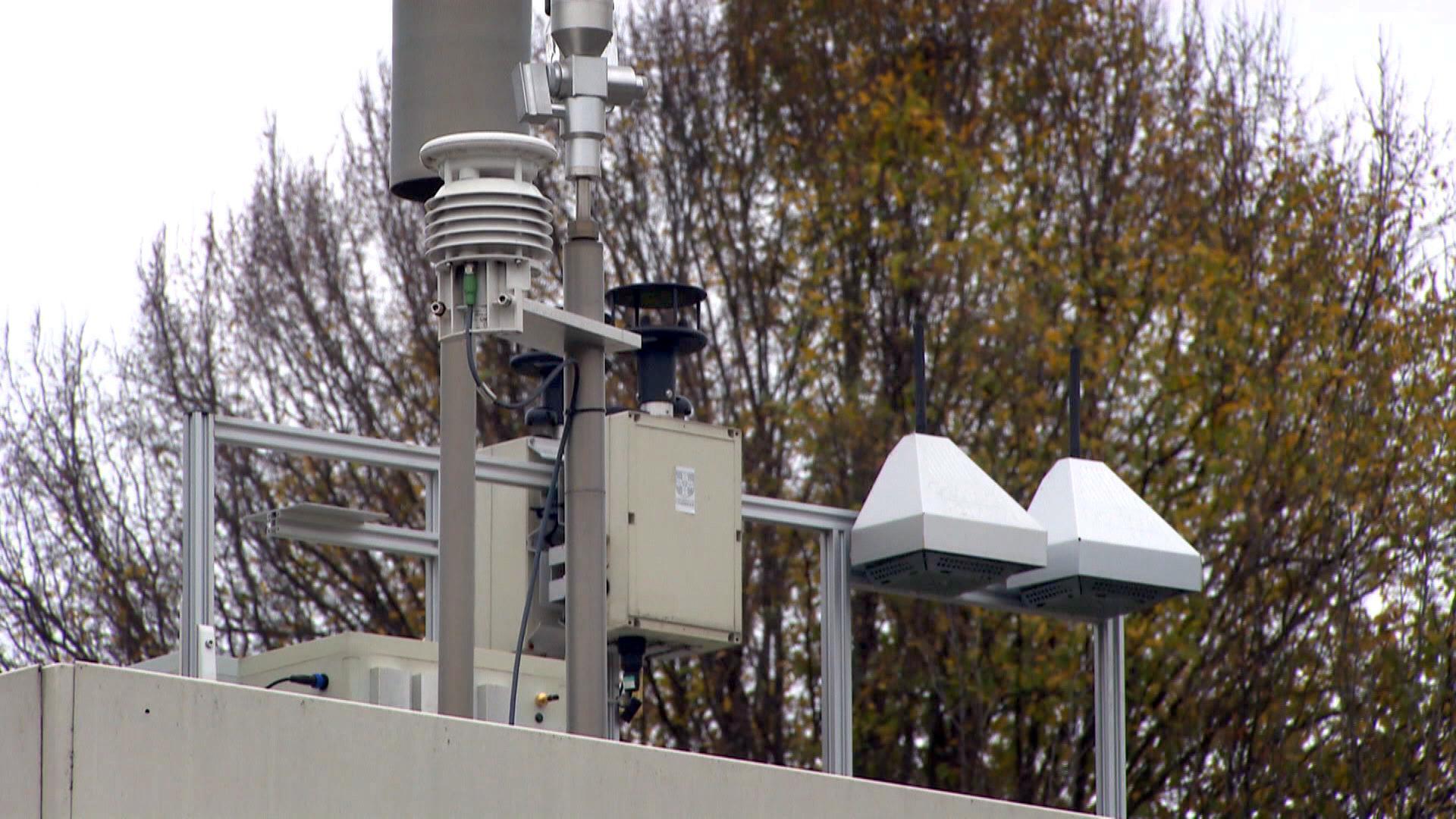

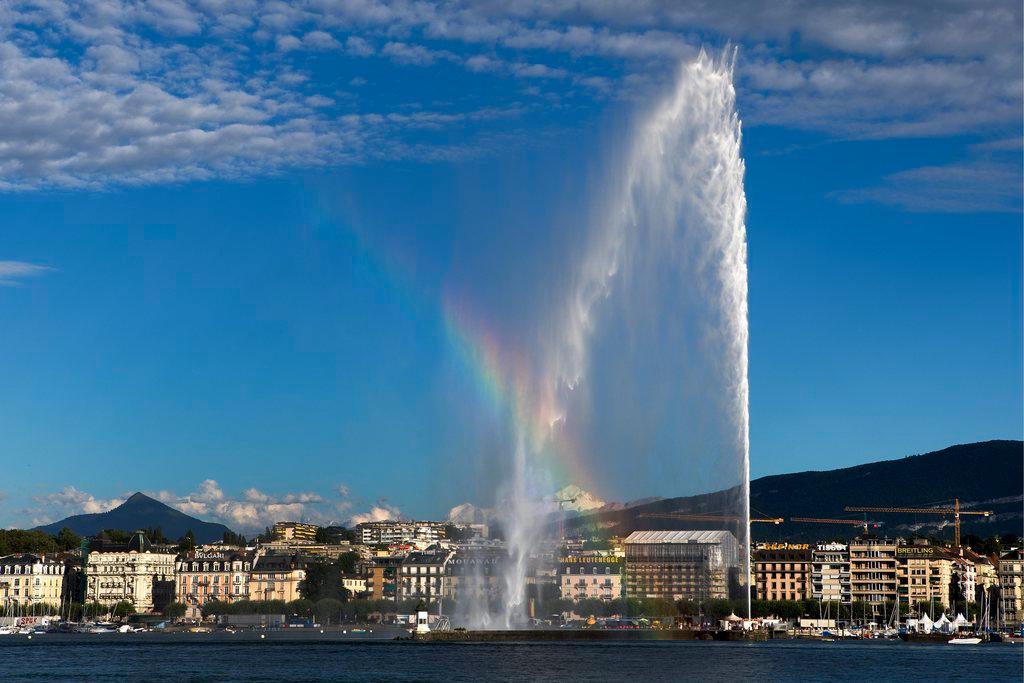
You can find an overview of ongoing debates with our journalists here. Please join us!
If you want to start a conversation about a topic raised in this article or want to report factual errors, email us at english@swissinfo.ch.